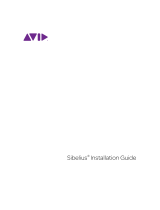Page is loading ...

TRIGGER
FINGER
This guide is intended to help get you started quickly.
In order to achieve optimal usage of your new Trigger
Finger, we recommend that you carefully study the
enclosed product manual, either after completing the
process described in this guide or before.
Quick Start Guide
16-Pad MIDI Drum Control Surface

3
English
Trigger Finger
Installation Procedure
Basic Installation
Because it is a class-compliant device, installing the Trigger Finger on your Windows XP or
Mac OS X computer is simple and straightforward:
Use the supplied USB cable to connect the Trigger Finger to a USB port on your computer and
you’ll be ready to go! You can do this while the computer is on or off, and no further driver
installation will be necessary.
Installing the Windows Multi-client Driver
While class-compliancy offers easy setup and connection of the Trigger Finger, the Windows class
driver is deficient in that only a single application, or program, can use the Trigger Finger at any
given time. For many users this is perfectly acceptable, as they will be using the Trigger Finger to
communicate with their host audio application only.
However, if you use multiple applications at once, including applications that are “ReWired” together
(such as using Ableton Live as a host application and simultaneously running Propellerhead
Reason as a slave), you’ll need to install the Windows Trigger Finger MIDI driver so both the host
and ReWired application can be controlled from the Trigger Finger simultaneously.
PLEASE NOTE: Do NOT connect your new MIDI controller to your computer until the appropriate
driver files have been installed onto your computer.
1. Insert the MIDI Controller Driver CD-ROM into your computer’s CD-ROM drive.
2. The computer will automatically display the interactive install screen shown below. If your
computer fails to launch the installer, manually start the installer by clicking on Start > My
Computer > MIDI Controller Series.
3. Follow the on-screen directions to choose your language and product. Once you select your
product, click “Install Drivers” to begin copying files.

4
4. Follow the driver installer’s on-screen directions.
5. At various points in this installation process, you may be notified that the driver being
installed has not passed Windows Logo Testing. Click “Continue Anyway” to proceed with the
installation.
6. Click “Finish” once the installer is complete.
7. Connect your new MIDI controller to an available USB port and switch it on.
8. Windows will identify the new MIDI controller and will display a “Found New Hardware
Wizard.” If you have Service Pack 2 installed on your computer, you will be asked if you’d like
to search the Internet for a driver. Please select “No, not this time” and press “Next.” You’ll
then see a screen like the one seen below:
9. Choose “Install software automatically” and click “Next.”
10. Once the final “Found New Hardware” wizard is complete, you will see a message pop up
that says “Your new hardware is installed and ready to use.”
Additional Information and Support
We recommend checking the M-Audio website regularly for driver updates and additional
information. The web address for the site is
www.m-audio.com. You’ll find links to drivers, news
stories, FAQs, additional products, and tech support.
/
